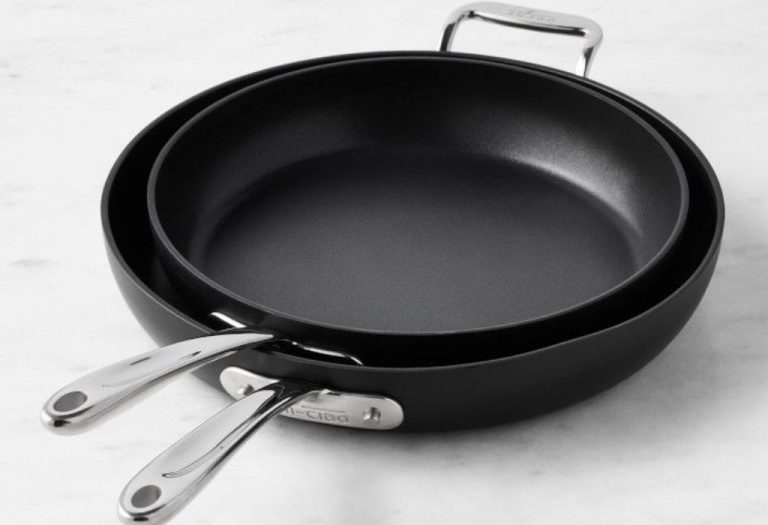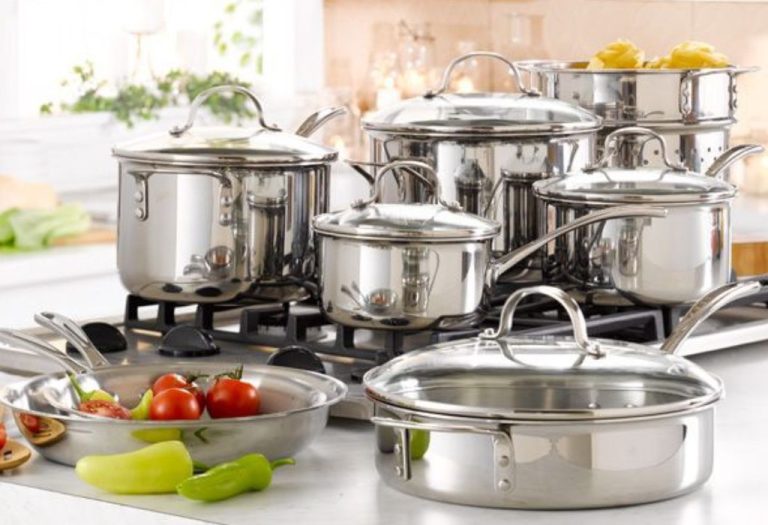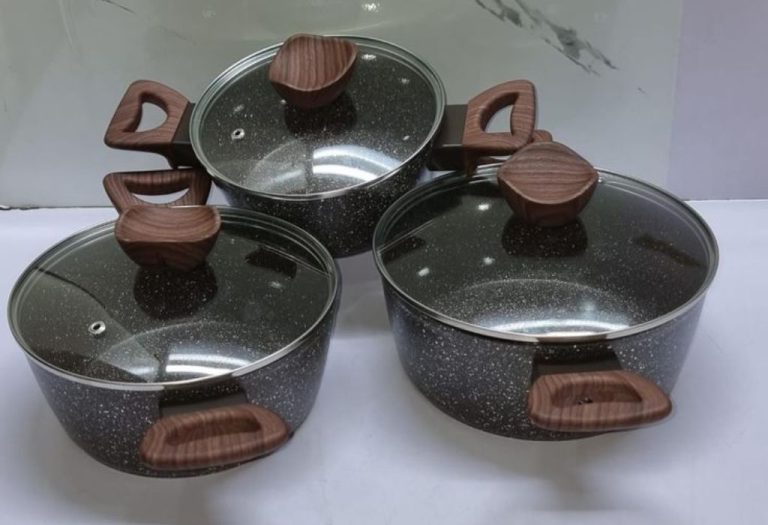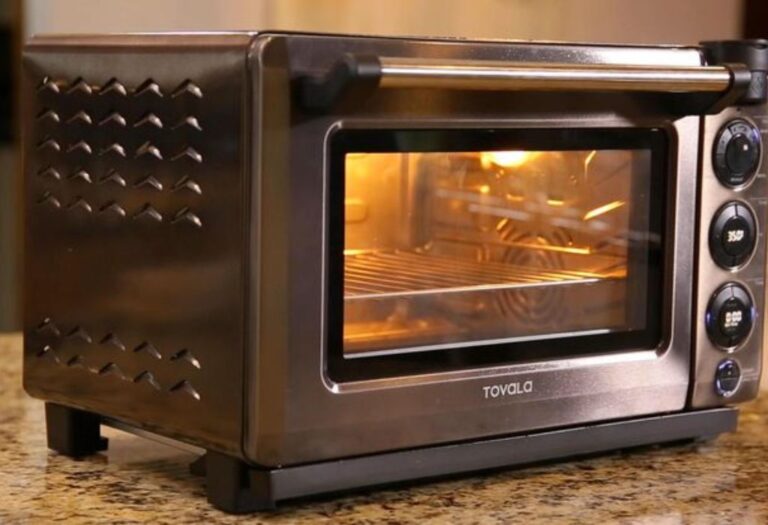A ceramic casserole dish filled with a bubbling family recipe is ready for the oven, but hesitation rises at the last moment. The question appears simple yet critical: can ceramic cookware go in the oven without damage.
This concern is more than a passing thought. Cracks, chips, or weakened coatings can transform a reliable pan into a costly mistake.
Curiosity often follows. Some brands advertise oven-safe limits as high as 600°F, while others warn against exceeding 350°F depending on the handles and lids. Such differences make it difficult for home cooks to know what is truly safe.
The benefit of clarity is obvious. With the right knowledge, ceramic cookware can safely transition from stovetop to oven, offering versatility without risk of premature wear.
Statistics highlight the importance of following guidelines. According to GreenPan, stainless steel handles on ceramic pans can withstand up to 600°F, while silicone handles are limited to 375°F and phenolic handles only 350°F (GreenPan). Glass lids often cap at just 425°F, making them the most vulnerable component (GreenPan Support).
Another report from Food & Wine shows that exceeding manufacturer limits accelerates coating degradation, reducing nonstick performance by nearly 30 percent over time (Food & Wine). These numbers prove that a single mistake can shorten the lifespan of cookware significantly.
What “Oven-Safe” Really Means for Ceramic Cookware

The phrase oven-safe is often misunderstood. It does not guarantee that ceramic cookware can withstand unlimited temperatures without risk.
Ceramic-coated cookware is built on a metal base with a delicate nonstick ceramic layer. This coating begins to degrade when exposed to excessive heat, even if the pan itself remains intact.
Pure ceramic cookware is different, as it is usually fired at high temperatures during production and can tolerate oven use more effectively. Still, rapid temperature changes or improper handling can cause cracks or thermal shock.
The real limit often comes from the other parts of the cookware. Handles made from silicone, phenolic resin, or plastic may cap the safe oven temperature at much lower levels.
Glass lids are another weak point, typically safe only up to around 425°F. Pushing beyond this range can lead to warping or shattering, even if the cookware body could handle higher heat.
For these reasons, oven-safe should always be defined by the lowest-rated component. Manufacturer guidelines are the most reliable source, and exceeding them risks damaging both the pan and the oven.
Temperature Limits by Common Materials and Parts
Ceramic cookware is not defined by the coating alone. The handles, lids, and even the bonding materials determine how much heat the pan can withstand in the oven.
The ceramic nonstick coating usually performs best at moderate temperatures. Many brands recommend keeping oven use below 500°F to avoid accelerated wear.
Stainless steel handles can often tolerate higher heat. These designs are typically rated up to 600°F, making them the most oven-friendly option.
Silicone handles offer comfort but sacrifice heat resistance. Their safe limit is closer to 375°F, which restricts their use for roasting or broiling.
Phenolic handles are even more sensitive. They usually max out at around 350°F, making them unsuitable for high-temperature baking.
Glass lids are the most vulnerable part of ceramic cookware. Tempered glass generally holds up to 425°F, but exceeding this range risks cracking or distortion.
Pure ceramic cookware often tolerates higher oven temperatures than ceramic-coated metal pans. However, it remains at risk of thermal shock if moved quickly between extreme temperature changes.
The safest practice is to follow the lowest limit among the components. By respecting these restrictions, the cookware can function reliably in the oven without sustaining damage.
Brand Examples and How to Read Their Labels
Not all ceramic cookware brands carry the same oven-safe limits. Each manufacturer sets its own thresholds based on the materials used in the cookware.
Made In’s CeramiClad collection, for example, is oven-safe up to 550°F. However, the brand advises avoiding routine use above 500°F to protect the coating.
Caraway cookware promotes an oven limit of 550°F as well. At the same time, the company emphasizes using low to medium heat on the stovetop to maintain long-term performance.
GreenPan varies more depending on handle design. Pans with stainless steel handles are safe up to 600°F, but those with silicone inserts drop to 375°F and phenolic handles only 350°F.
Most glass lids sold with GreenPan sets are limited to about 425°F. These lower ratings mean the lid often determines the safe oven temperature rather than the pan itself.
Pure ceramic cookware brands, such as Xtrema, typically advertise full oven safety for their entire product line. Even so, gradual heating and cooling are stressed to prevent cracks from thermal shock.
Reading product labels and manufacturer websites is critical before placing any ceramic cookware in the oven. The brand-specific guidance always outweighs general assumptions.
Step-by-Step: How to Use Ceramic Cookware in the Oven Safely
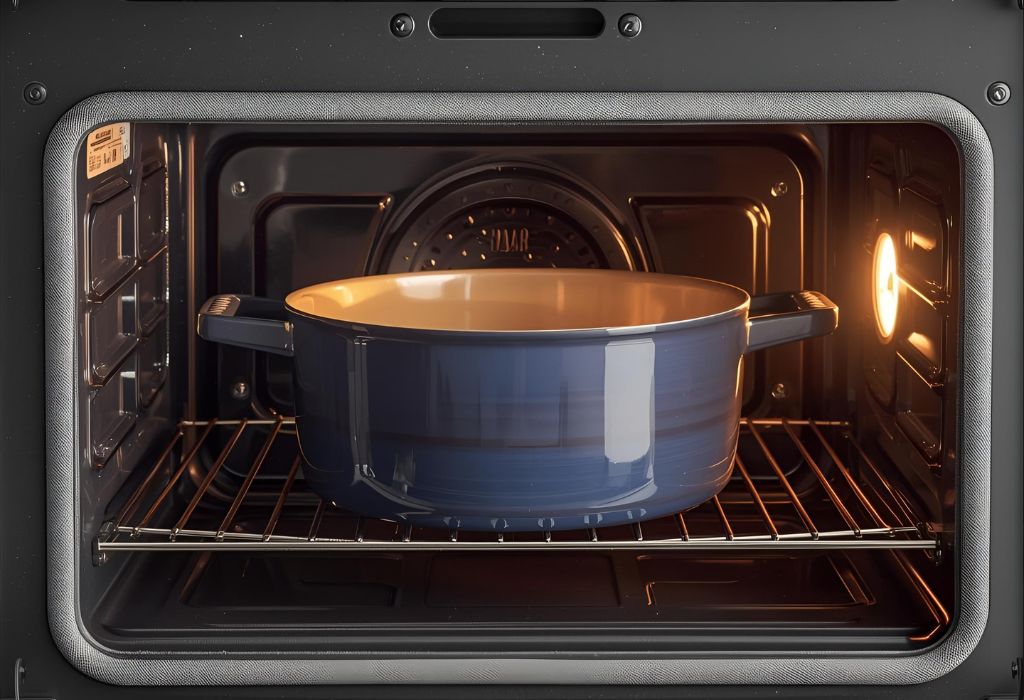
Safe oven use begins with preparation. Always confirm the manufacturer’s guidelines before exposing ceramic cookware to heat.
Preheating the oven to the desired temperature ensures even cooking. Never preheat the pan empty at high heat, as this can stress the coating and cause discoloration.
When placing cookware inside, consider the weakest part of the set. If the lid or handle has a lower heat tolerance, follow that limit instead of the maximum body rating.
Avoid sudden temperature shocks. Moving a cold ceramic pan directly into a very hot oven increases the chance of cracking or warping.
After cooking, allow the cookware to cool gradually. Placing a hot pan on a wet or cold surface can create thermal shock that damages both the coating and the structure.
Use protective oven mitts when handling. Ceramic cookware retains heat for a long time, and safe handling prevents burns as well as accidental drops.
Following these steps ensures that ceramic cookware remains functional and attractive. With careful attention, it can move from stovetop to oven without damage.
Common Mistakes That Cause Damage
One of the most common errors is exceeding the lowest-rated component. A stainless steel handle may survive 600°F, but a glass lid can fail at only 425°F.
Using the broiler without checking brand instructions also leads to problems. Many ceramic coatings are not designed to withstand direct broiler heat.
Thermal shock is another frequent cause of damage. Moving cookware straight from the refrigerator to a hot oven or from the oven into cold water creates stress cracks.
Some users also damage their pans by combining oven heat with metal utensils. When ceramic coatings are softened by high temperatures, they are even more vulnerable to scratching.
Dishwashing immediately after baking adds further risk. Hot water, harsh detergents, and high dishwasher heat degrade the nonstick surface faster.
Avoiding these mistakes keeps ceramic cookware looking new. Attention to small details makes the difference between years of reliable use and a shortened lifespan.
Care, Cleaning, and Long-Term Maintenance After Oven Use
Proper care after oven use ensures ceramic cookware remains in excellent condition. Allow the pan to cool gradually before beginning any cleaning routine.
Hand washing is the safest option. Mild dish soap and a non-abrasive sponge remove residue without scratching the ceramic coating.
Stubborn baked-on stains can be handled with natural methods. A paste of baking soda and water works effectively without damaging the surface.
Avoid steel wool, harsh scouring pads, or abrasive cleaners. These tools strip away the protective coating and shorten the lifespan of the cookware.
Dishwashers may seem convenient, but repeated cycles expose pans to extreme heat and strong detergents. Over time, this erodes the coating and weakens the oven-safe integrity.
Lightly oiling the surface after deep cleaning helps maintain the slick nonstick layer. This seasoning method reduces sticking and protects the finish during future oven use.
Storing cookware with protectors or soft cloths between pans prevents scratches. Proper storage extends the life of both the coating and the oven-safe performance.
These practices, combined with careful oven use, ensure ceramic cookware stays reliable for years. Maintenance is as important as correct cooking techniques for long-term results.
Choosing the Right Ceramic for Regular Oven Use
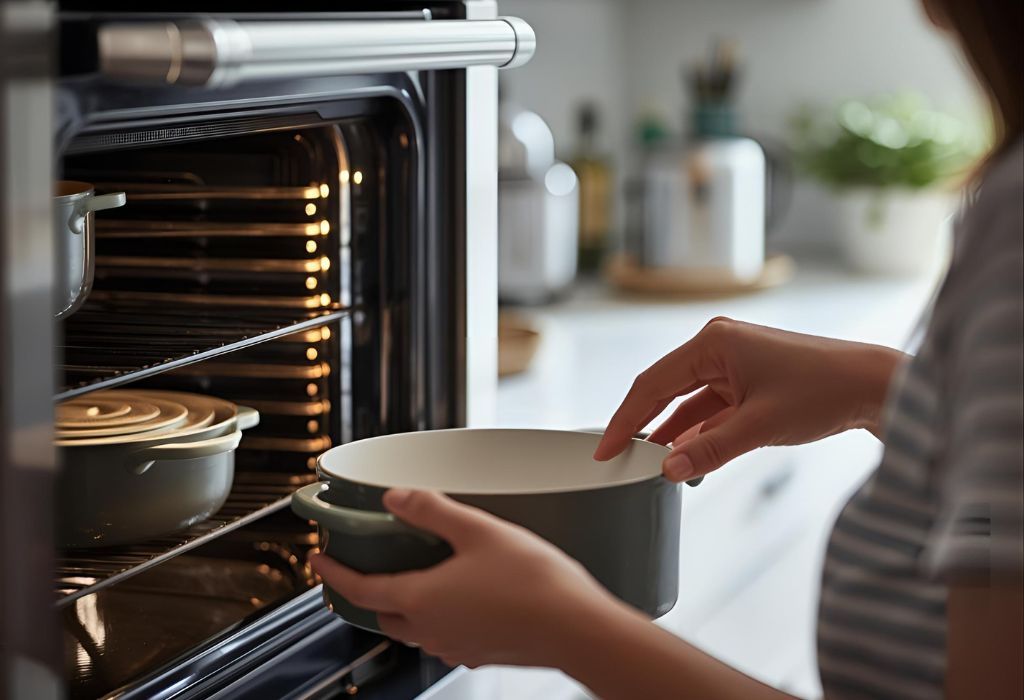
Not all ceramic cookware performs equally well in the oven. The choice between pure ceramic and ceramic-coated metal determines durability and versatility.
Pure ceramic cookware is heavier and often more tolerant of high heat. It retains warmth for longer, making it a strong option for slow roasts and baked dishes.
Ceramic-coated metal cookware is lighter and heats quickly. However, the nonstick layer is more sensitive to high oven temperatures and requires extra care.
Handles make a significant difference in oven performance. Stainless steel handles allow use at higher temperatures, while silicone or phenolic handles restrict maximum heat.
Lids are also critical when choosing cookware for regular oven use. Glass lids typically max out at 425°F, while stainless steel lids extend the safe range further.
When selecting a set, it is important to check the manufacturer’s specific oven safety ratings. These ratings are based on real product testing and should guide every purchase decision.
Investing in cookware that clearly states oven limits prevents costly mistakes. The right choice ensures both safe cooking and long-term durability in the kitchen.
Conclusion
The question can ceramic cookware go in the oven without damage is not answered with a simple yes or no. The real answer depends on coatings, handles, and lids, each with its own temperature limit.
By respecting the lowest-rated component, cookware remains safe and functional. Stainless steel handles may tolerate up to 600°F, but glass lids and silicone handles reduce that range significantly.
Safe use also depends on good habits. Gradual heating and cooling, careful cleaning, and proper storage prevent cracks and extend the nonstick surface.
Choosing the right cookware at the start makes oven use easier. Sets that clearly state oven-safe temperatures provide confidence and reduce the risk of costly mistakes.
The benefit of following these practices is long-lasting cookware. Ceramic pans can deliver excellent performance in the oven when treated with care and respect for their limits.
I’m Emma J. Caldwell, the founder, lead writer, and home-cooking enthusiast behind KitchenGuideCo.com. With a background in culinary arts and over a decade of cooking experience in both professional and personal kitchens, I created this platform to demystify recipes, offer smart kitchen gadget reviews, and guide readers through meal prep with confidence and clarity.



